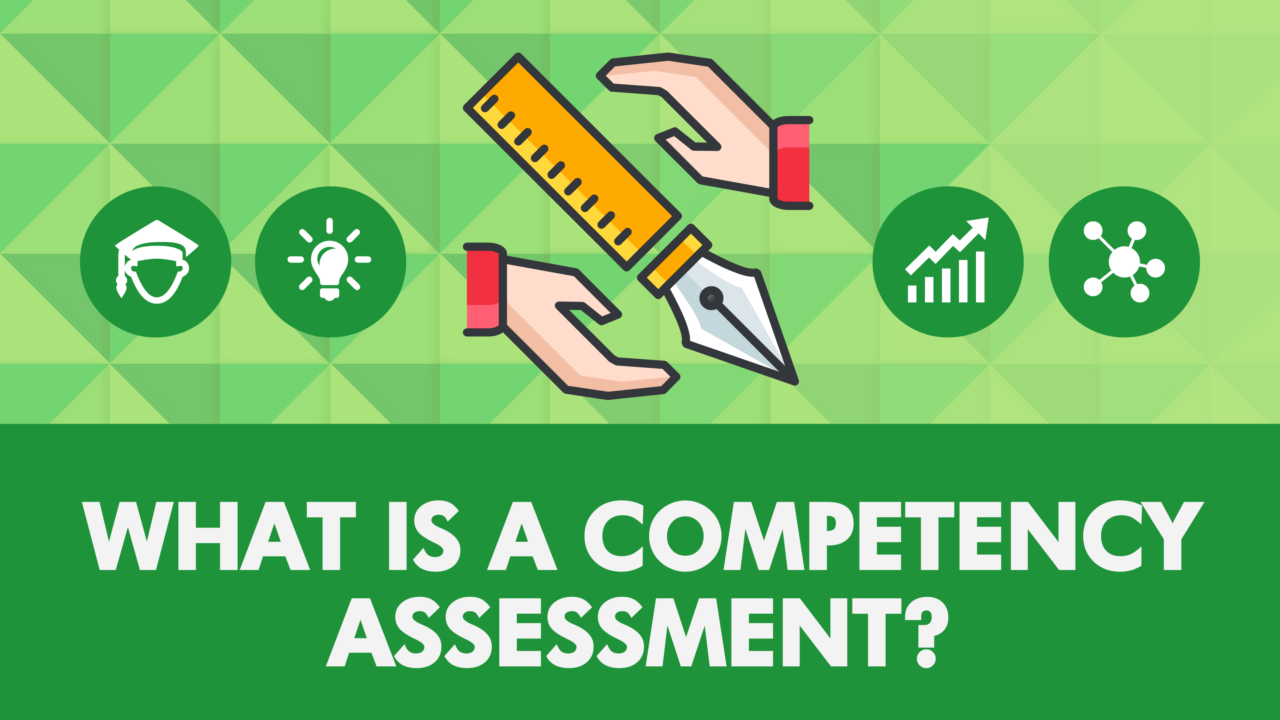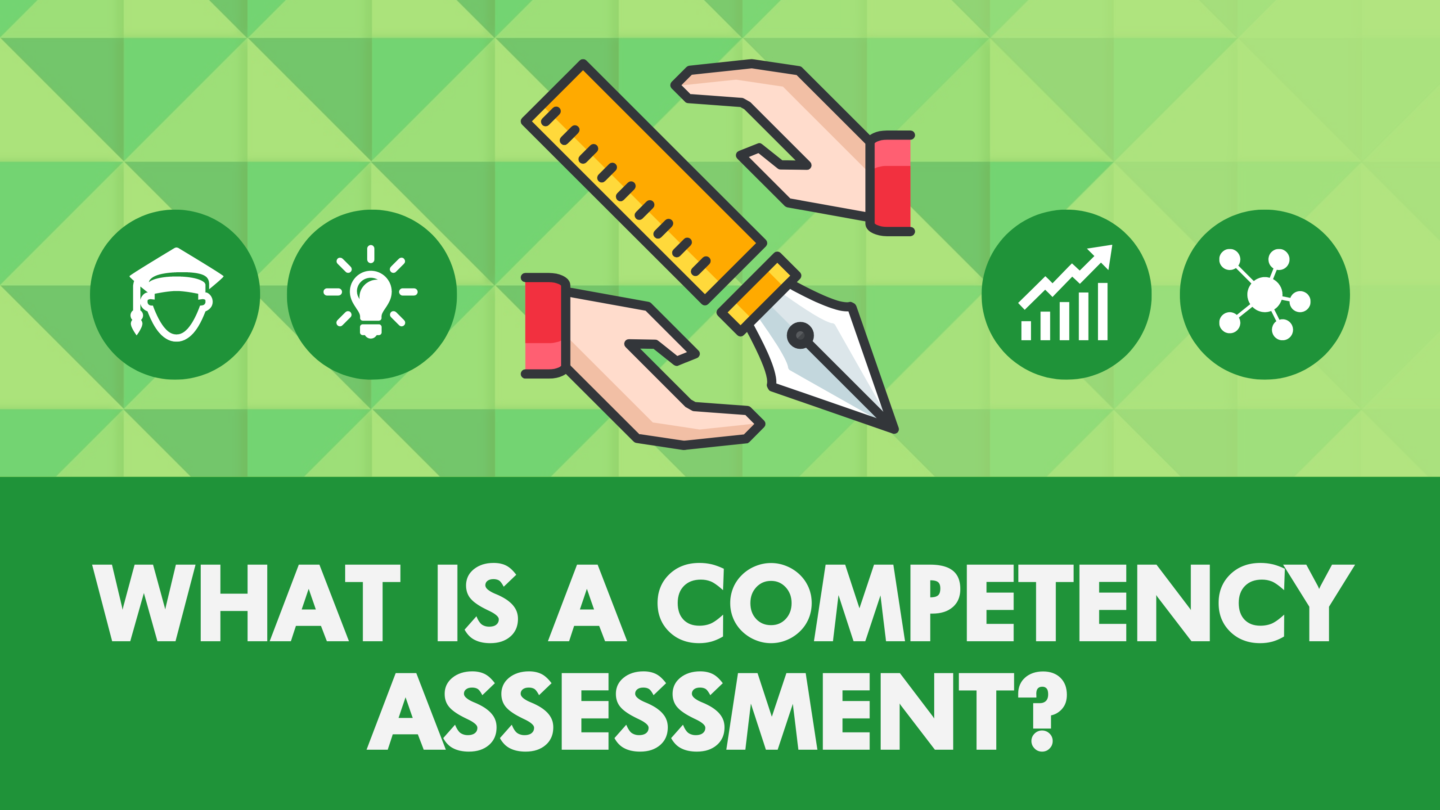
What is a Competency Assessment?
Assessing an employee’s capabilities is a cornerstone of any performance review process but measuring them against the specific needs and requirements of their role transforms that assessment component into a measurable practice called a competency assessment.
What is a Competency Assessment?
Competency is defined as the application of knowledge, skills, and behaviors used in performing specific job tasks. Usually, it is one of the key attributes being assessed when you are measuring an employee’s performance. A competency assessment, however, is the assessment of an employee’s capabilities against the requirements of their job. The goal of competency assessment is to identify any problems with an employee’s performance and to correct those issues before they affect work quality or customer care.
The actual requirements of a role that a competency assessment relies on are outlined in what is called a competency model. A valuable competency model provides an overview of the key tasks and skills most critical to success in the role, not an outline of every activity being performed in the job. This more thorough description can be provided in a traditional job task analysis.
In order to define an employee’s proficiency level, a competency assessment is performed on the tasks and skills identified in the competency model, for which a rating is selected based on how well the employee performs the task. Simply put, a competency assessment measures how (behaviors) an employee does the what (task or skill). When the individual’s proficiency level has been defined, it can then be compared with the target level, helping employers recognize proficiency or skill gaps for each relevant task and skill.
The Benefits of Conducting a Competency Assessment
While one of your top priorities should always be to keep an eye on how your employees are working and monitoring any potential skill gaps that could cause issues in the future, there are several key benefits to introducing competency assessments into your regular performance review strategy. Some of these include:
1. Quantifying the Size of Skill Gaps.
It can be hard to miss skill gaps when they are causing extreme detriments to business, but most organizations are unaware of the actual quantity and size of all the skill gaps that can exist in their workforce. They can know they have them, but not have the means to recognize just how large or widespread they are, meaning they can’t use them to inform organizational plans, strategy, and priorities.
As a leader, the decisions you make guide the future of your company. But when you don’t have competency assessment data or skill gap analyses to inform those key decisions, you can never confidently aim towards future successes. A competency assessment sheds light on those areas you might be missing, helping you fully understand your organizational capability and make the best decisions you can for the business.
2. Informing Future Action.
If your role centers around learning, talent, and effectiveness, a competency assessment can help eliminate the data void and establish a culture of learning so that upskilling and reskilling can happen continuously. Ensuring all individuals have the necessary skills required to do their current and future jobs should be a given, but it is impossible to navigate, and then mitigate, any existing skill gaps effectively if you have no skills assessment data to inform that overview.
Recognizing which individuals possess the required skills, and which don’t, enables individual learning and development programs to valuable employees to close those gaps. With the data accumulated from a competency assessment process, you can also pair high performers of one specific skill with others that have a skill gap in that area, closing gaps quickly by leveraging task-based mentoring as a learning strategy. In addition, a competency assessment system can also improve your talent acquisition strategy, since you can identify the areas of skills the organization lacks in and hire new employees with those skills accordingly to fill in those gaps.
3. Driving Consistent Improvement.
A solid performance review strategy involves more than a single assessment approach. Especially today, organizational change is occurring at a faster and faster rate, to the point where sometimes the moment an employee is upskilled or reskilled, some of their newly learned skills have already become obsolete.
The future of the business world is beginning to centre around a notion of continual skill reinvention, and consistent competency assessments gear towards that future. Driving capability within your organization begins when you create a cycle of assessment, ongoing development, and reassessment on those skills and tasks you have already worked on, providing you with a constantly updated current picture of capability at any time. By transforming your performance review process into a culture of ongoing, lifelong learning, leveraging skill-specific competency assessments, you can drive real growth within your organization.
How to Complete a Competency Assessment
For a competency assessment to be successful, you first need to have three key elements:
- A role-based competency model to assess individuals against.
- A competency assessment system that will facilitate the scaling, privacy, and capability analytics of the process.
- A personalized learning plan to create and promote individual reskill and upskill action plans for employees.
It is possible to implement a competency assessment with only one of the first two elements but having all three in place before proceeding will produce the best results. The key takeaway, however, should be the importance of having a solid system of assessment itself. Historically, using basic tools such as spreadsheets or manual filing run a much higher risk of a breach of privacy or a lack of global control. Especially for larger companies, the volume of skill inventory data will be significant, so you need a system that can streamline the analytics for you and create data visualizations for the results.
SpriggHR’s Performance Review Tool is a good example of a modern, streamlined approach to competency assessment. An element of the performance review tool includes a customizable Skills & Competencies section, where you can identify the specific skills and tasks required for a role and assign the relevant competencies to individuals working in that role. You can then measure the position-specific skills, knowledge, and behaviors against the employee’s actual performance, simplifying your competency assessment process and drawing out the key results for you without getting lost in the minutiae.
The other key takeaway is, evidently, the critical nature of establishing learning plans that aim to expand the skill set of an individual through the building and execution of action plans. While the first two steps help you to capture competency data, you can’t address skill gaps without a concrete plan of action.
In Summary
Organizational growth depends on individual progress, but for employees to be able to do their jobs as well as they need to, they need to have self-awareness over the areas they are lacking in. By having a process in place that can systematically highlight those skill and task gaps, employees are much more likely to buy into the fact that there is action they need to take themselves should they wish to progress within the company. By leveraging a method of performance review that continuously provides the tools necessary to upskill and reskill employees in the right ways, and aligning their competencies with the needs of the business, you have a chance to set each person on a path toward continuous learning and growth.




